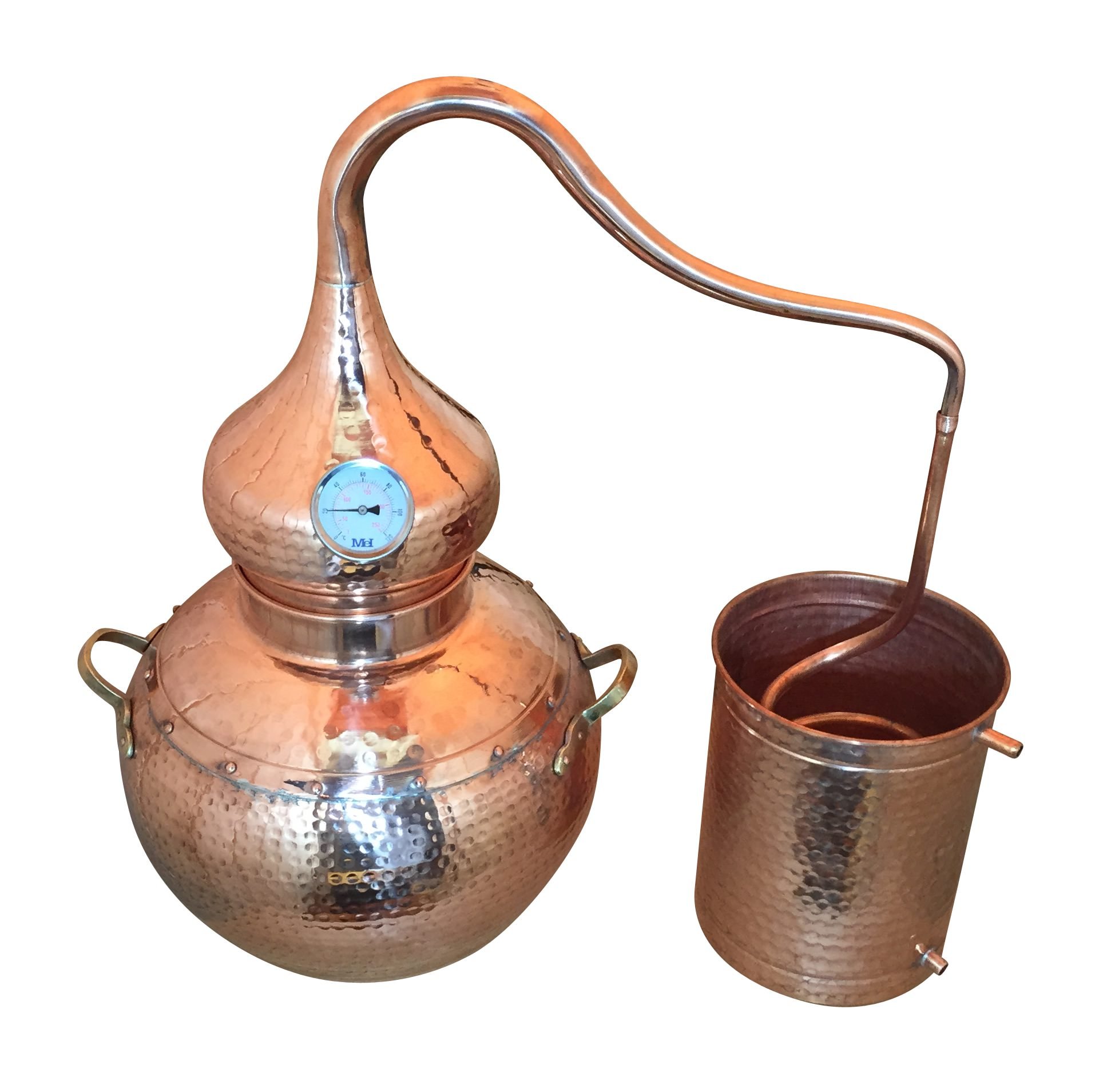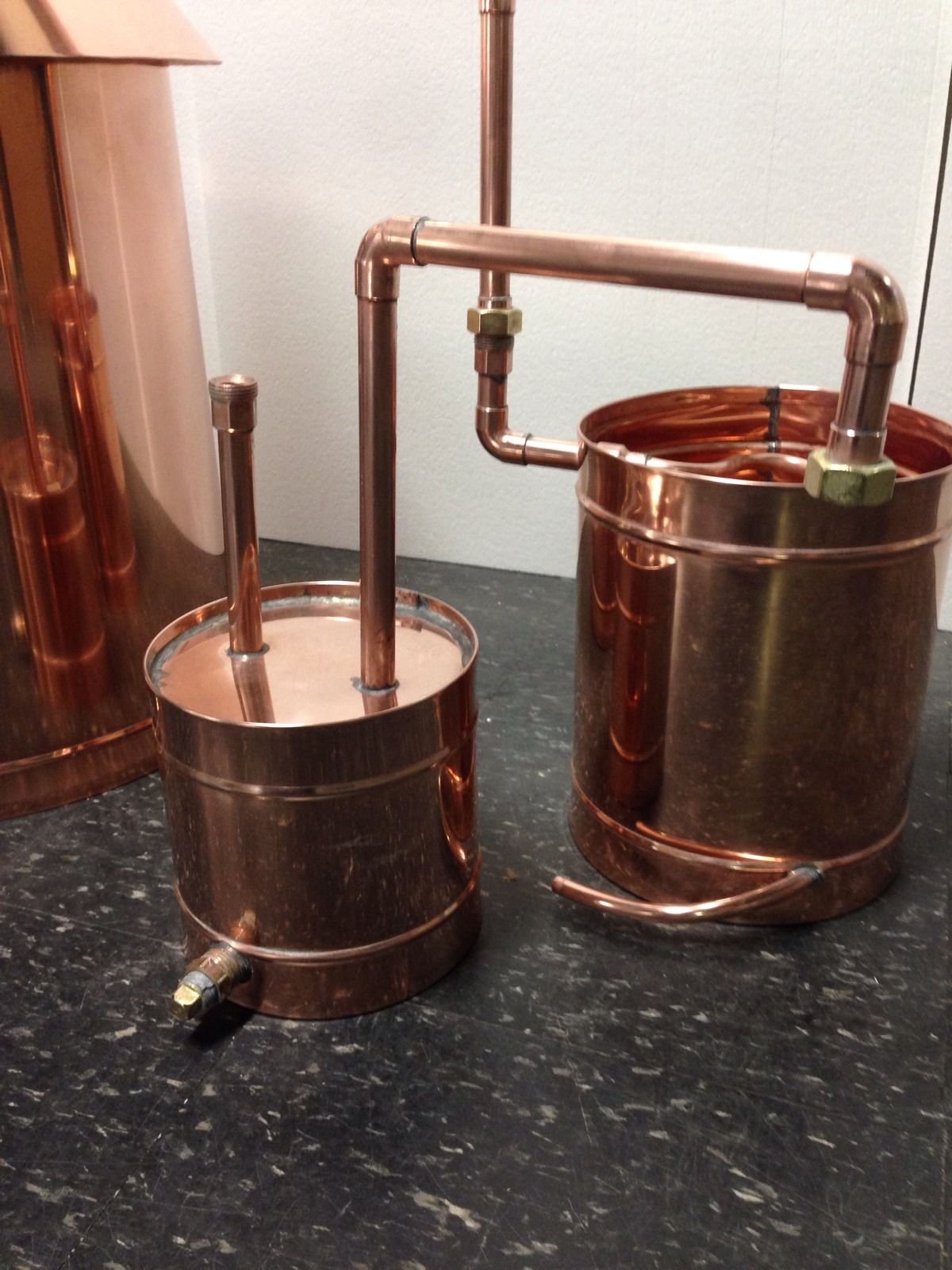
Hypothetically speaking, at this point the boiler thermometer may read something like 195 F (again, depending on the starting alcohol) and the vapor probe could read as low as 175 F. Once vapor begins to form in the pot and it migrates up the column, the vapor temperature probe at the top of the column (if one is installed there) will rise from ambient temperature to 175 in a matter of a minute. Vapor temp and wash temperature should be very different. Should Vapor Temperature and Wash Temperature be the Same? Also, if a still is polished and has a shiny surface, the signal could be bouncing off and giving a reading of ambient surfaces. They measure surface temp of a still, not of the liquid or vapor inside. First of all, never use an infrared thermometer to try and measure still temp. Keep in mind that the temperature reading is highly dependent on where the reading is being taken. The boiler temperature is measuring the temperature of the liquid inside the still, while the vapor thermometer is measuring the temperature of the vapor inside the column. The two thermometers read different temperatures during the run, but they are also measuring two different things. We recommend having one in both locations as it makes distilling a lot easier. Adding a secondary thermometer at the top of the column to measure vapor temperature is helpful too. Always make sure a 100% copper adapter and a stainless steel thermometer is being used.
#Moonshine thumper diagram install#
We prefer to install a temperature probe in the boiler, at the very least. Where Should a Thermometer Be Installed on a Still? The bottom line is that as a still runs, the temp constantly increases. Well, at that point one can expect liquid temp to have increased to about 198 F. Lets say that half way through the run half of the alcohol has been taken out of the wash and the wash is at 10% abv. As a commercial distiller let's their still run and more alcohol is extracted from the wash, the wash alcohol % drops accordingly. For example, if a commercial distiller starts with a strong wash that has a starting alcohol of 20%, they can expect that ethanol will begin to boil out of the solution once liquid temp reaches about 190 F.

Should a Still Maintain a Constant Temperature During Distillation?Īnother question we hear is "should I keep my still temp exactly 174 F during a distillation run?" The answer to that is "no, absolutely not." Why? Well the answer has a lot to do with the chart above. Also, keep in mind, the data on the chart above only applies for distilling at sea level! The higher the elevation, the lower the boiling point. For example, in a wash with a starting alcohol of 20%, ethanol won't begin to boil until liquid temp reaches 190 degrees F. It shows the liquid boiling temp of ethanol based on the concentration of ethanol in a solution. To determine the exact temperature at which ethanol will start boiling in a wash, check out this chart (Source: Craft of Whiskey Distilling by the American Distilling Institute).
#Moonshine thumper diagram how to#
The temp will have to be much higher than that before alcohol starts coming out of the still. For those that don't know how to determine the alcohol % of a wash, read our How to Use a Hydrometer article. A wash that only has a starting alcohol of 10% ethanol won't boil anywhere near 174. More likely it's something like 10% alcohol (ethanol) and 90% water.Ī solution that is 10% ethanol and 90% water is going to have a boiling temperature of about 197 degrees Fahrenheit. If it was, why would one be distilling it? A first run wash is generally never any stronger than 20% ethanol. One question we hear a lot is "Should I see alcohol coming out of my still once the temperature reaches 174 degrees F?" The answer to this question is "No, a commercial distiller should not." Why? As we mentioned, the boiling point of pure ethanol is 174 degrees F. Should a Still Start Producing Alcohol At 174 Degrees Fahrenheit? In fact, in a 50/50 solution of ethanol and water, the boiling (liquid) temperature of ethanol will be about 180 degrees. However, if a commercial distiller has a solution that is 50% ethanol and 50% water, the boiling temperature will be significantly higher. Again, the boiling temperature of a solution that is 100% ethanol is 174 degrees. The more water there is in the solution, the higher the boiling temperature.Ĭommercial distillers that measure liquid temperature while distilling may have noticed that liquid temp can often be much higher than 174 before a still starts producing.

The boiling temperature of ethanol in a wash, that is to say, ethanol mixed with water, is completely dependent on the ratio of ethanol to water. The boiling temperature of pure ethanol is 174 degrees F. There is a lot of information stating that the boiling temperature of ethanol is 174 degrees Fahrenheit. We get a lot of questions about distillation and temperature.


 0 kommentar(er)
0 kommentar(er)
